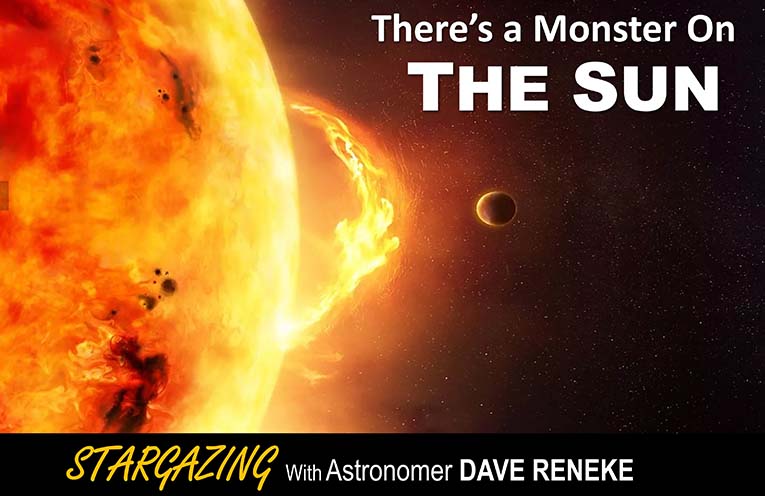
THE enormous sunspot that sparked the spectacular aurorae across the globe last month is back facing the earth, and it appears to be getting bigger.
One of the largest sunspot groups seen in years, this monster is so big that fifteen earths could fit inside it!
Now you can understand why we call it a monster.
June 2023 has marked the highest monthly average for sunspot numbers in 21 years.
Sunspots are believed to spawn solar flares you’ve probably heard of.
The bigger the sunspot the more powerful the flare.
Well, last week it happened, one of these giant sunspots exploded creating a powerful solar flare that ionised Earth’s atmosphere, resulting in a deep shortwave radio blackout over western parts of the U.S. and the Pacific Ocean that lasted around 30 minutes.
The solar particles collide with the gas in our atmosphere during a geomagnetic storm, causing them to glow in the stunning colours seen during the aurorae.
Different gases emit different colours: oxygen produces green and red light, while nitrogen emits blue and purple light.
Magic stuff, shutterbugs just love ‘em!
The solar flare we’re talking about was seen as a bright ultraviolet flash by NASA’s Solar satellites.
It was classified as an X-flare, the strongest type of solar flare that exists. Solar flare classes increase in strength by magnitude, much as the Richter scale ranks earthquakes.
These X-class flares are huge, equal in intensity to a Category 5 hurricane – and there’s probably more on the way!
Solar flares can be pretty damaging because we rely so much now on electronic communication.
The sheer electromagnetic power of a really large solar flare could severely damage or destroy any of our communication satellites and overload power stations causing mass blackouts and power outages.
Last month we saw solar flares shooting away up to 100,000 kilometres in length!
Most developed countries like Australia, are particularly vulnerable because the power infrastructure is highly interconnected, so failures could easily cascade like a chain of dominoes. Imagine large cities without power for a week, a month, or a year.
The losses could be $1 to $2 trillion, and the effects could be felt for years.
So, the next time you get burnt red from being outside too long, spare a thought for how powerful that ball of energy is that dominates the daytime sky.
How much energy is in a solar flare?
Well, what you are about to read will make you think twice about what we’re currently using to power our homes.
It’s been estimated the most powerful flares have the energy equivalent of a billion hydrogen bombs.
Think about that for a moment – enough energy to power the whole world for thousands of years.
If you’ve got solar panels your energy provider (the Sun) will provide power to you for the next five billion years, before it burns out.
Remember, the Sun is a star, just like the other stars we see at night, only closer at just over eight light minutes away.
We wouldn’t be here if the Sun wasn’t just the right distance from planet Earth.
It produces poem worthy sunsets and releases as much total energy as 1 trillion megaton bombs every second!
Wow, that’s raw untapped power!
By the way, the Sun would hold our little Earth a million times over.
So how big do stars get?
Recently found, UY Scuti is a colossal star, its enormity dwarfs our Sun by a factor of 1,700.
Its circumference spans nearly 5 billion kilometres and this powerhouse emits an astonishing 380,000 times the energy of our sun!
Staggering figures aren’t they?
It could engulf all the inner planets if placed in our solar system’s centre.
Even at high speeds, circumnavigating it would take over 1,100 years, emphasising its vastness.
Dave Reneke is an astronomer, writer, lecturer, broadcaster and space historian heard on over 50 radio stations each week across Australia.
See Dave’s website: www.davidreneke.com.
By Dave RENEKE, Astronomer
